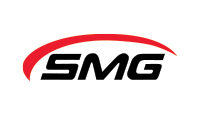We manage energy project development, environmental permitting, remediation and compliance, insustrial hygiene, health & safety, auditing, environmental management, government relations. We solve your problems in all of these areas. We move quickly and dig deeply to reach your goals. We work wherever you are.
How can SMG help you?
SMG POV
Progress in reduction of Urban Air Toxics – EPA’s Urban Air Toxics Report to Congress
WRITTEN BY
Shri Vani SripadaTAGGED
U.S. EPA released the Second Integrated Urban Air Toxics Report to Congress which is the final of two reports required under the Clean Air Act (CAA) to inform Congress of progress in reducing public health risks from urban air toxics.
Air toxics, also known as toxic air pollutants or hazardous air pollutants (HAPs), are those pollutants that cause or may cause cancer or other serious health effects or adverse environmental and ecological effects. The CAA identifies 187 HAPs that EPA is required to protect public health. More specifically, to address HAPs in urban areas, Section 112(k) of the CAA directs EPA to identify a subset of 30 HAPs that present the greatest threat to public health in the largest number of urban areas. These 30 HAPs are known as the 30 Urban Air toxics.
The report highlights some of the results achieved through EPA’s air toxics regulations:
- 66% reduction in benzene,
- Nearly 60% reduction in mercury from man-made sources like coal-fired power plants,
- 84% decrease of lead in outdoor air, which slows brain development in children,
- Removal of an estimated 1.5 million tons per year of air toxics like arsenic, benzene, lead and nickel from stationary sources and another 1.5 million tons per year of air toxics from mobile sources, and
- Approximately 3 million tons per year of criteria pollutants, like particulate matter and sulfur dioxide, have been reduced from cars and trucks.
More information at http://www2.epa.gov/urban-air-toxics
FEATURED PROJECT
PROBLEM
A local company engaged in manufacturing imported a small amount of a chemical substance defined under TSCA. Faced with a potential EPA enforcement action with penalties assessed for noncompliance under TSCA of up to $32,500 per day per violation, the company called SMG for help.
SMG'S APPROACH
SMG analyzed the company’s current TSCA procedures and assisted the company in developing a proactive, cost-effective compliance procedure. SMG also facilitated a training program to educate employees about TSCA.
MG worked with the company to develop mechanisms that assured adherence with the policies that were being implemented for compliance. Procedures to promptly correct any potential violations and prevent future violations were also put into place.
RESULTS
SMG was able to show that the company complied with the relevant TSCA regulations and was improving their TSCA policies and procedures to assure that future issues were less likely to occur. The company was not subjected to the proposed penalties and now has mechanisms in place to maintain TSCA compliance.
